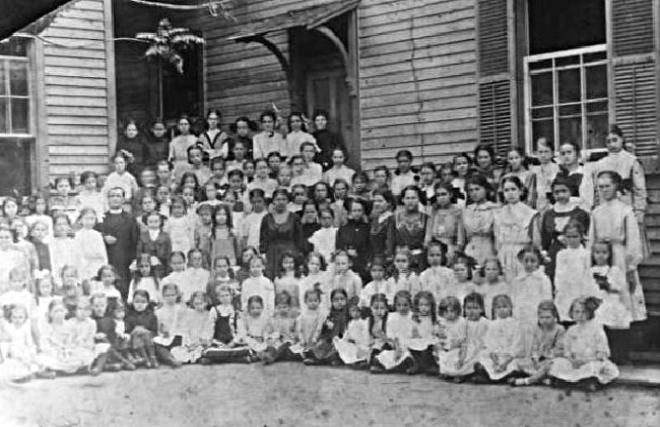
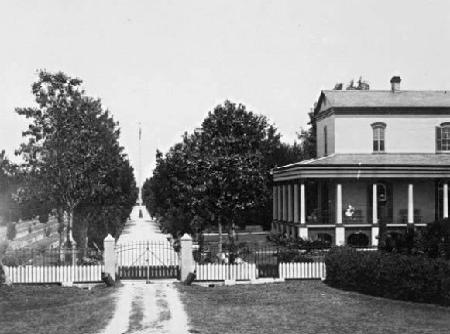
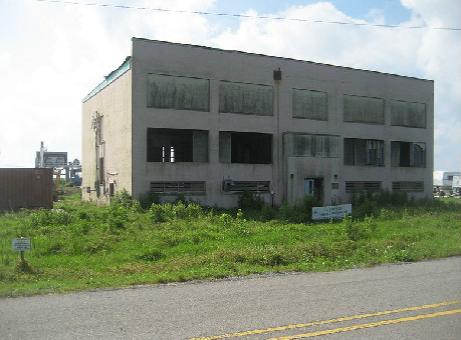
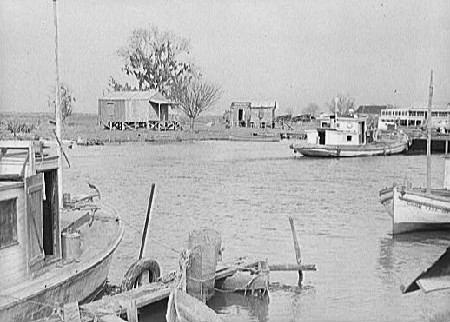
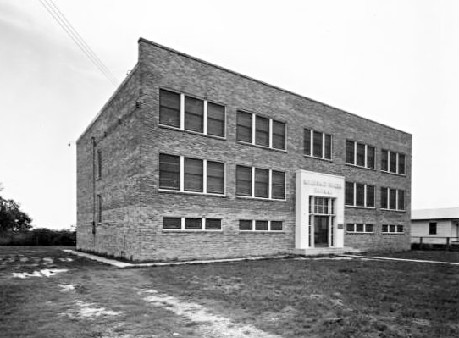
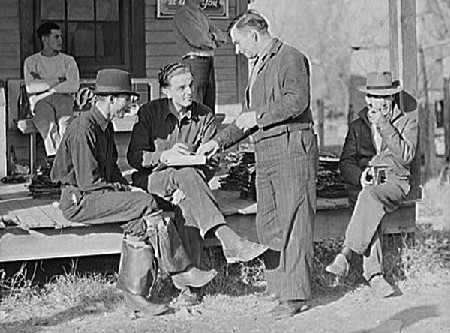
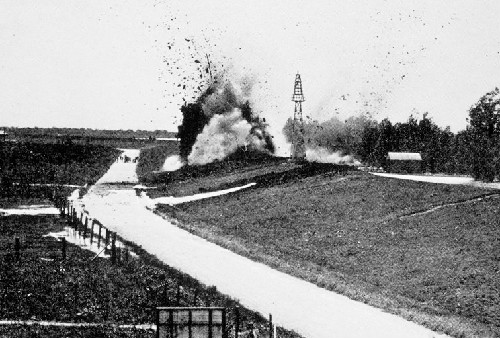
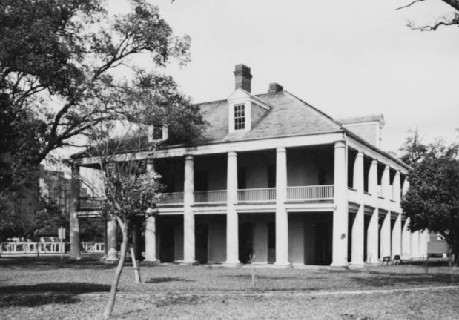
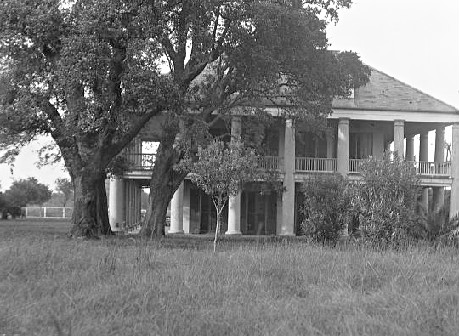
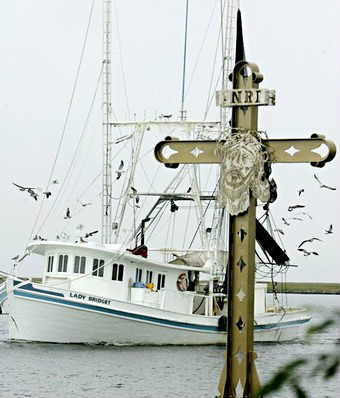
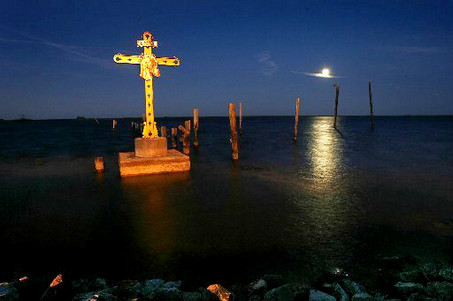
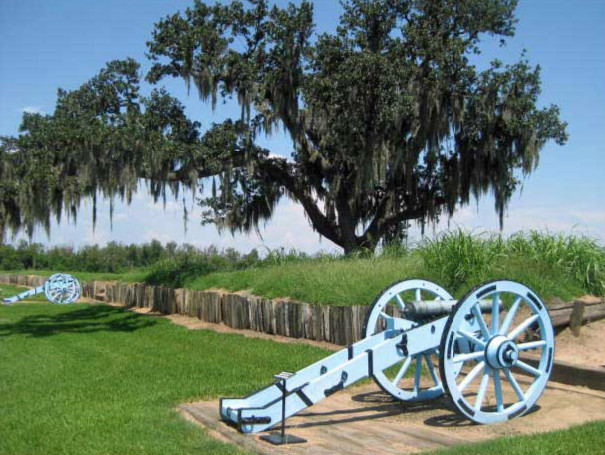
| St. Bernard Parish, Louisiana |
| St. Bernard Parish is New Orleans' neighbor to the south and east. It was here, seven miles below New Orleans, that Gen. Andrew Jackson and his badly out- numbered army defeated British forces in the Battle of New Orleans in 1815. |
| St. Bernard Parish was devastated in the massive levee failures of 2005. There was hardly a structure in the parish which was undamaged and virtually the entire parish was inundated with flood waters between 5 and 12 feet. |
| The struggle to rebuild has been long and difficult, but the people of south Louisiana have shown themselves to be strong, resilient, determined and resourceful in the face of hardship almost beyond imagining. The citizens of St. Bernard Parish have demonstrated all of these traits and more. |
Chalmette Battlefield
St. Bernard Parish, LA
St. Bernard Parish, LA
| A school in St. Bernard Parish; date looks to be early 1900's. |
| Entrance to Chalmette National Cemetery, Chalmette Battlefield; date between 1900-1920. |
| Above and below, Delacroix Island, 1941 |
| Above, Delacroix Island school, ca. 1940's; below, the same building (no longer a school, but used as a local government office) stands abandoned in 2010, after the flooding of 2005. The majority of buildings on Delacroix Island were destroyed at that time, but many have been rebuilt. |
| Spanish Canary Islanders (Islenos) settled in what is now St. Bernard Parish in the 1770's, having acquired land grants from Spain. As more people came downriver from New Orleans to invest in sugar plantations, the Islenos eventually sold all of their land grants and moved further east. |
| By the mid-1800's, they had established a large community at Delacroix Island. Delacroix Island is regionally famous for its excellent fishing. The Los Islenos Cultural and Heritage Society of St. Bernard is active in preserving the language, customs, music and history of the Islenos. |
| Above & below, Three Oaks Plantation, 1920's & 1930's. This historic home in St. Bernard Parish was constructed in 1815. It met its end in 1966 at the hands of the American Sugar Refinery (sugar refineries and railroad companies being the two entities most often responsibsle for the loss of plantation structures downriver from New Orleans -- |
| Caernarvon, St. Bernard parish ~ The Great Mississippi River Flood of 1927 Photo shows the dynamiting of the levee 14 miles below New Orleans at Caernarvon to create an artificial crevasse. This was done in an attempt to save the city of New Orleans by taking pressure off of the levees. It turned |
| either by virtue of demolition or benign neglect). The unpublicized razing of Three Oaks did, however, galvanize Louisiana landmark and historical societies into being more aggressive in their attempts to save historic old homes. |
| out not to have been necessary, because there were several accidental breaches in the levee system, preventing waters from threatening the city. The flooding that resulted from the destruction of the levee at Caernavon caused major damage in St. Bernard and Plaquemines Parishes. |
| Shell Beach, St. Bernard Parish -- Memorial to the 364 victims of the levee failures of 2005 who died in St. Bernard Parish. ~ "In everlasting memory" ~ |
| "In the waters of Lake Borgne, a Katrina memorial steel cross stands against a morning sky, while waves splash up against it, and shrimpers make their way out, silently, on their boats, under the watchful eyes of seagulls. Another day begins in St. Bernard Parish." -- Rod Lamkey, Katrina at 5: Still Life |
| Photographs on this page are courtesy of the Library of Congress, KatrinaMissionTeam.St.John'sUnitedMethodistChurch.Dover.NH, ExploreNewOrleans, NOAA.Photo.Library |